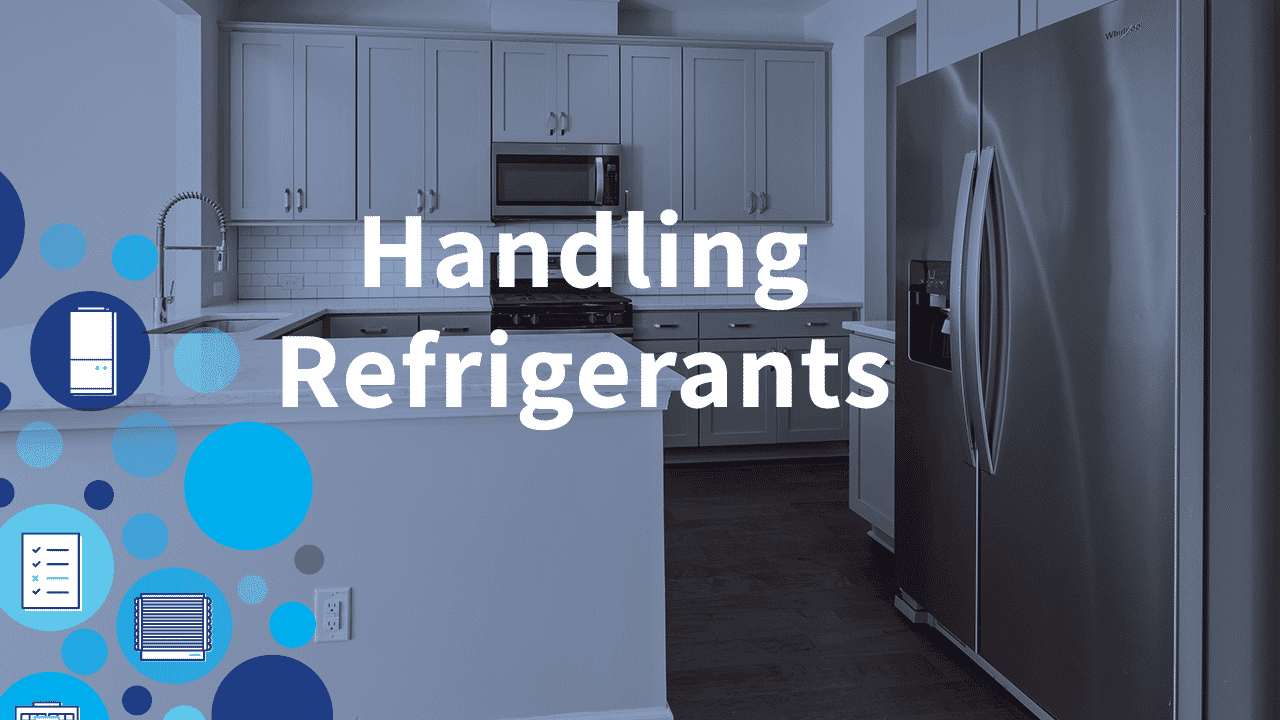As an HVAC contractor, your job involves servicing and maintaining systems so they can run efficiently. But when the task calls for it, you’ll have to remove or dispose of refrigerants.
Unfortunately, you can’t just toss it away like regular trash because some refrigerants like R-22 Freon have harmful impacts on the ozone layer.
So how do you remove refrigerant safely? Our guide below will provide insight on safely removing and disposing of refrigerants. We’ll also discuss how you can stay abreast of new refrigerants and the certifications needed to handle them.
Why the Section 608 Technician Certification is Essential
To handle refrigerants, you will need the Section 608 Technician Certification. It’s an official EPA recognition noting your proficiency in refrigerant removal and associated laws. Since appliances use different refrigerant pressures, there are different certification types you can get, such as:
- Type I: For removing refrigerant in smaller appliances
- Type II: Better for equipment that uses high-pressure refrigerant
- Type III: Useful when handling appliances using low-pressure refrigerant
- Universal: Covers refrigerant removal for all three types
To get this certification, you’ll need to pass a core test, which is 25 multiple-choice questions. It covers various HVAC topics like handling refrigerants and the safety measures involved.
Then you’ll need to pass a specific certification exam depending on the equipment you want to work with (Type I, II, III). These tests are 50 questions each, and to qualify for the certification, you’ll need to pass with 70% or better. For universal accreditation, you’ll need to take all three tests.
Tools Necessary for Refrigerant Recovery
Freon is a dangerous substance, and you must limit its release into the atmosphere. So you’ll need to have the proper equipment before working on this task. According to the Service Clinic: Effective Refrigerant Recovery Techniques, the items you’ll need include:
- Gloves
- Safety goggles
- A manifold set with two center utility ports, about ¼-inch for recovery and 3/8-inch for vacuum
- Blue and red low and high-side ports
- Charging hoses with ball valve ends
- Recovery cylinder
Your recovery unit should have a large condenser, regulator valve, and a high-pressure cutout switch; the recovery tank should be able to handle about 400 psi.
Different Recovery Methods
Before beginning your refrigerant recovery, it’s essential to know about the different recovery methods. Here’s a quick overview of them:
- Liquid recovery: With this method, you’ll still transfer the refrigerant while it’s still in liquid form. It’s the fastest method out of the three but isn’t possible with all HVAC systems.
- Vapor recovery: The most common method of refrigerant removal; it’s transferred while in a vapor state.
- Push-pull recovery: A two-step process that involves removing the liquid from the unit and then changing the hose connections to remove the vapor. However, it’s only applicable when a system has more than 10 pounds of refrigerant.
While recovery steps may differ, they generally include:
- Evacuating the unit
- Attaching and detaching hoses to measure appliance pressure
- Using AHRI-certified recovery equipment to place refrigerant into a recovery cylinder
- Weighing the refrigerant
Although this is a brief overview of the steps, ensure to review your materials, so you’re handling the refrigerant correctly. Incorrect handling of this substance can lead to prolonged exposure, which can have adverse health effects.
Disposing of Refrigerant
After removing the refrigerant, next is disposal. You can take the cylinders to landfills that are licensed to handle refrigerants. Most appliances can get taken anywhere once the correct removal steps have been followed.
Anything with a cooling feature such as a window AC unit, refrigerator, vending machine, or ice maker needs to get checked before sending for disposal. You’ll also need to provide documentation stating that you followed the EPA guidelines, which include:
- The amount and type of refrigerant that was removed
- Model and serial number of the unit
- Unit location upon refrigerant recovery
- HVAC company information
- Date of removal
- Technician certification details
Responsibilities as an HVAC Contractor
Besides having the correct refrigerant removal certifications, you are also responsible for keeping up to date on emerging refrigerant types. For example, the HVAC industry is transitioning to A2L refrigerants due to their lower flammability and toxicity than other options.
You can keep up with new developments by regularly checking Motili’s blog for the latest industry insights.












